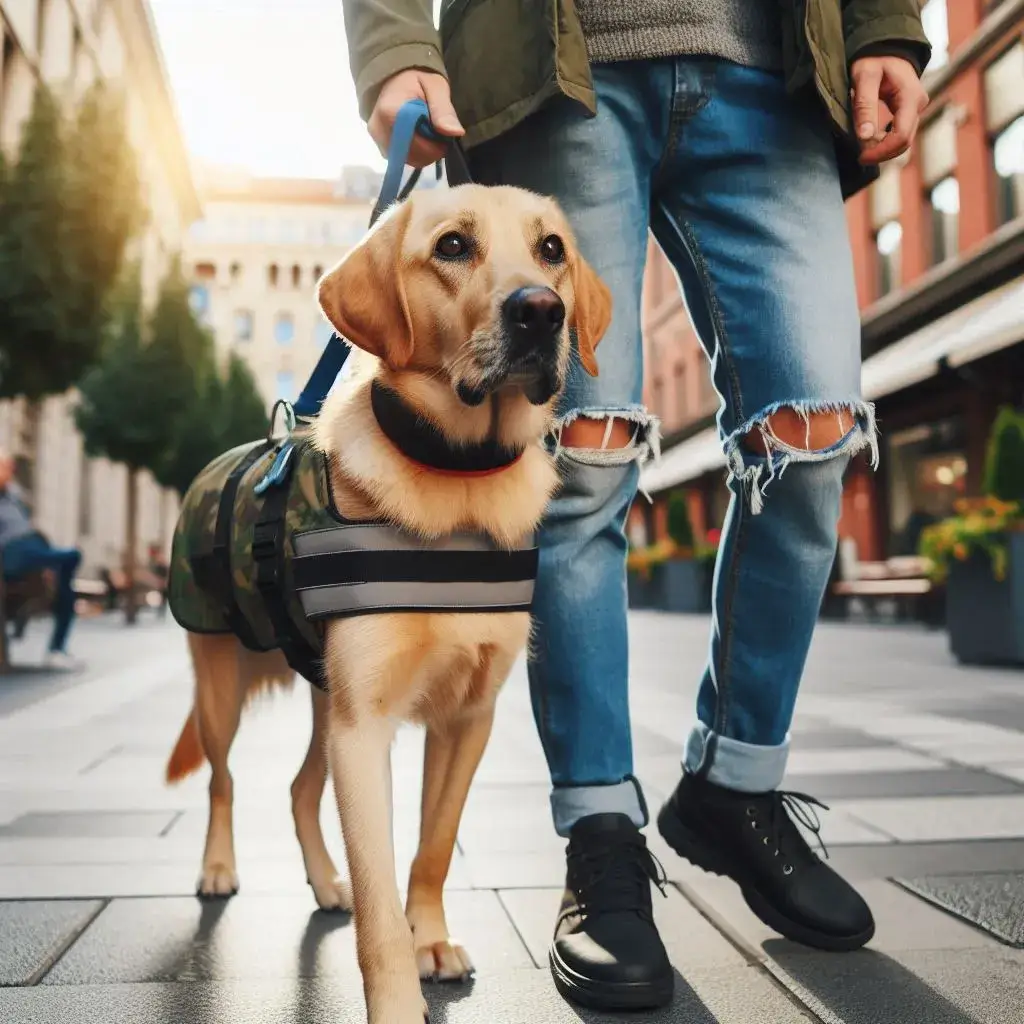Service animals play a crucial role in assisting individuals with disabilities, offering both practical support and emotional comfort. Among the various types of service animals, dogs are the most common due to their intelligence, loyalty, and trainability. However, not all dog breeds are equally suited for service work. This guide explores the top dog breeds that make excellent service animals, considering factors such as temperament, adaptability, and trainability.
Understanding the Role of Service Dogs
What Is a Service Dog?
A service dog is specially trained to perform tasks that assist individuals with disabilities. These tasks can range from guiding visually impaired individuals to alerting those with hearing impairments or providing mobility support. Service dogs undergo rigorous training to meet the specific needs of their handlers.
Legal Definition and Rights
Under the Americans with Disabilities Act (ADA), service dogs are legally recognized and have the right to accompany their handlers in public places, including restaurants, stores, and public transportation. This distinction sets them apart from emotional support animals and therapy dogs, which do not have the same legal protections.
Qualities of a Good Service Dog
Not all dogs possess the qualities necessary to become effective service animals. The best service dogs are intelligent, calm, and eager to please. They must be able to perform specific tasks consistently and remain focused even in distracting environments.
Essential Traits for Service Work
Key traits of a good service dog include:
- Temperament: Calm and friendly, not easily startled.
- Intelligence: Quick learners capable of complex tasks.
- Trainability: Responsive to commands and eager to learn.
- Reliability: Consistent in performing tasks and following commands.
Top Dog Breeds for Service Work
Labrador Retriever
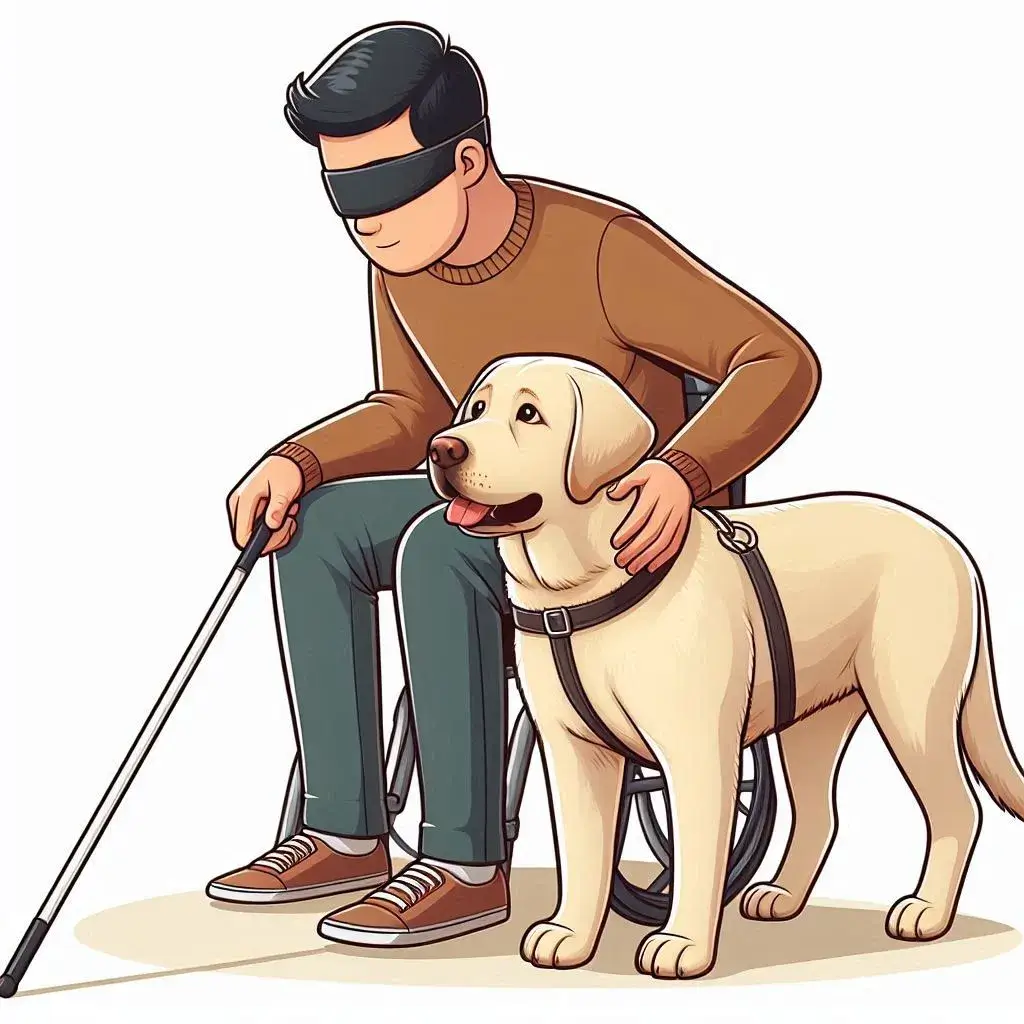
Labrador Retrievers are one of the most popular breeds for service work, particularly as guide dogs for the visually impaired. Their friendly disposition, intelligence, and high trainability make them ideal for various types of service tasks.
Why Labs Excel as Service Dogs
Labradors are known for their strong work ethic and adaptability. They are highly social and form strong bonds with their handlers, making them excellent companions. Their size and strength also allow them to assist with mobility tasks, such as pulling wheelchairs or providing stability.
Golden Retriever
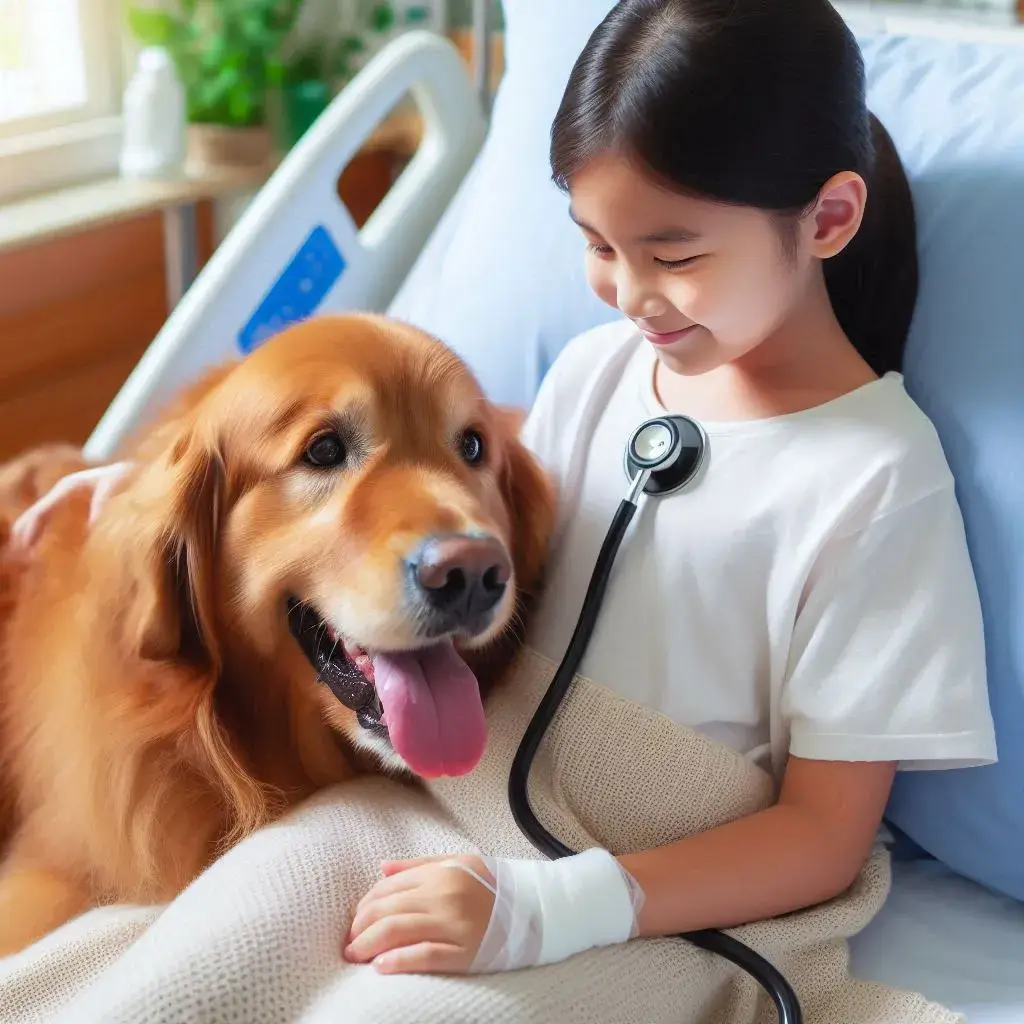
Golden Retrievers share many of the same qualities as Labradors, making them another top choice for service work. They are particularly well-suited for emotional support and therapy work due to their gentle nature.
Specific Tasks Golden Retrievers Perform
Golden Retrievers are often used as therapy dogs in hospitals and schools because of their calming presence. They are also excellent at tasks requiring physical assistance, such as retrieving dropped items or opening doors.
German Shepherd
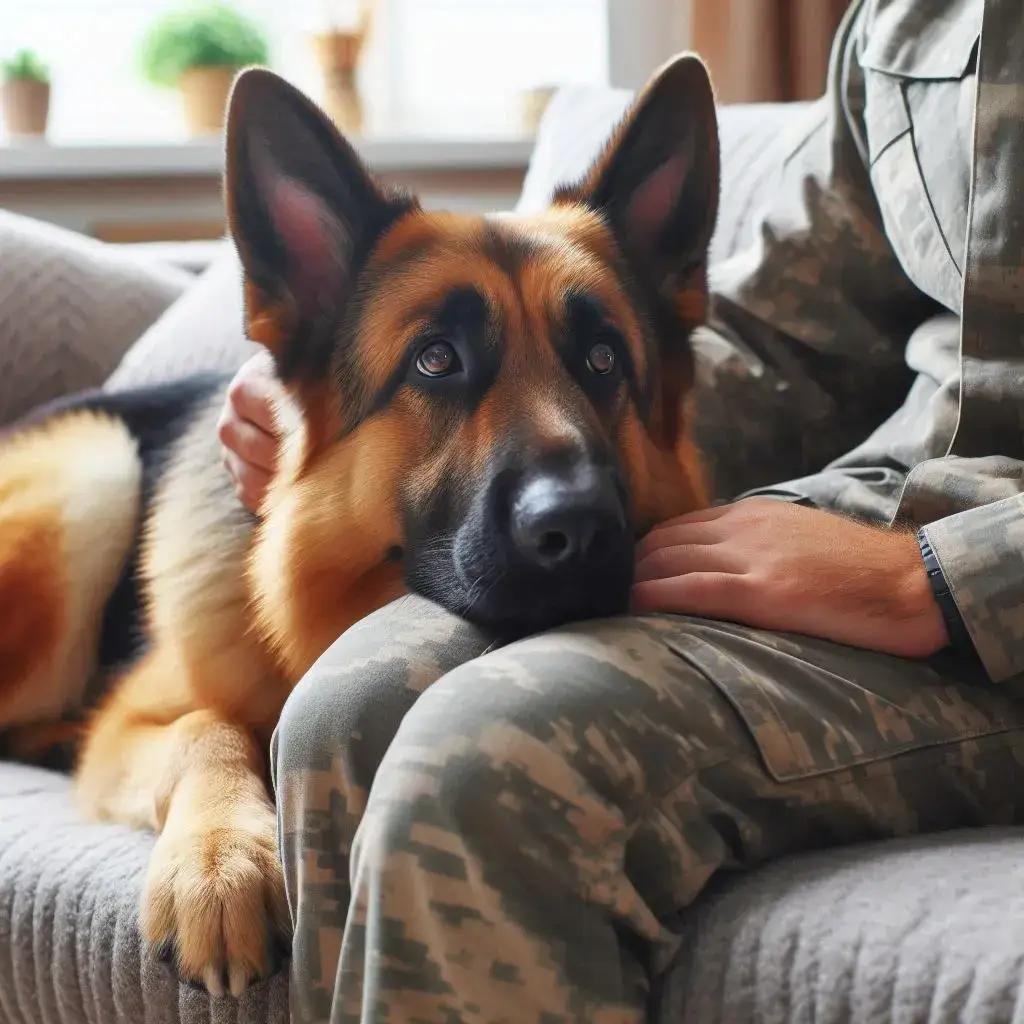
German Shepherds are widely used in police and military work, but they also make outstanding service dogs. Their loyalty, intelligence, and protective instincts are particularly beneficial for individuals with mobility impairments or PTSD.
The Versatility of German Shepherds
German Shepherds excel in a variety of service roles, from guiding the visually impaired to protecting those with psychological disorders. Their strong sense of duty and obedience make them highly reliable in challenging situations.
Poodle
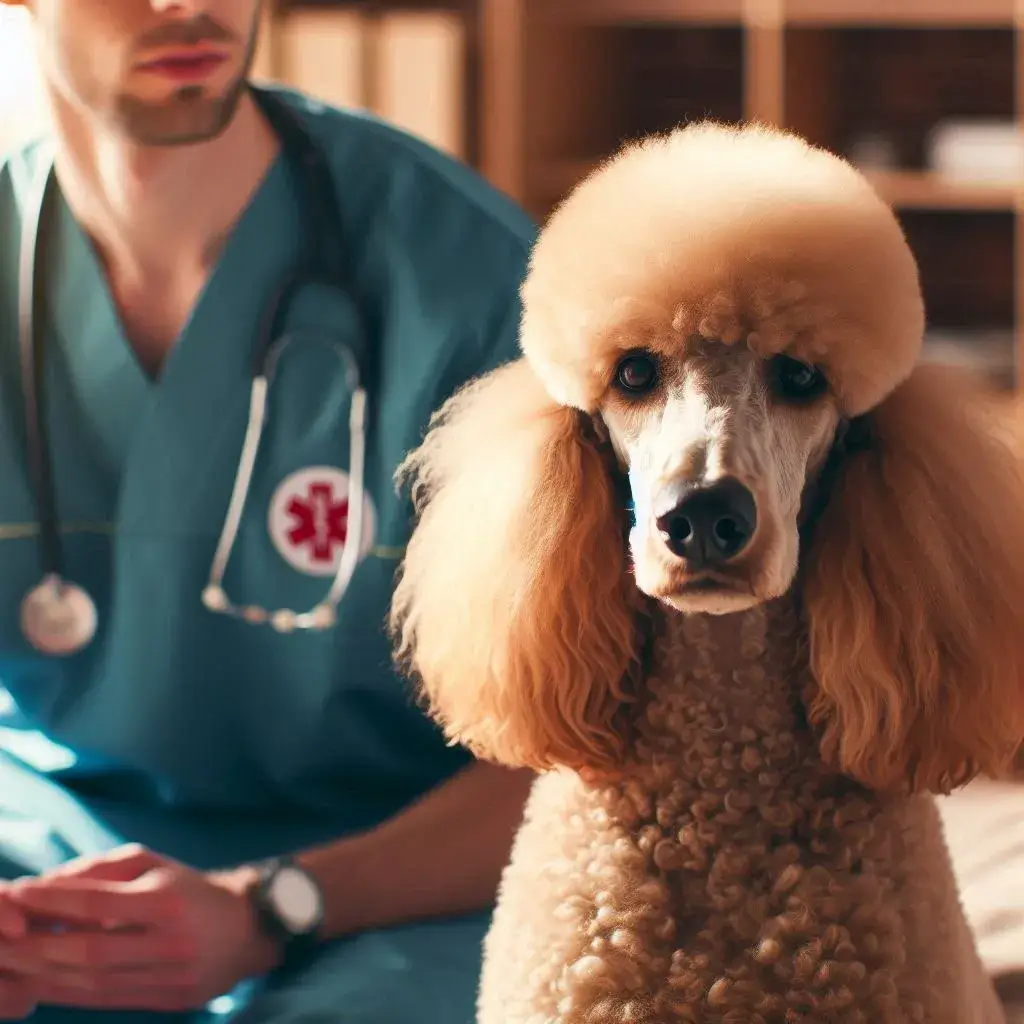
Poodles, particularly Standard Poodles, are excellent service dogs due to their high intelligence and hypoallergenic coats. They are particularly beneficial for individuals with allergies or asthma who require a service dog.
Poodles in Specialized Roles
Poodles are often trained for medical alert tasks, such as detecting changes in blood sugar levels in individuals with diabetes or alerting to seizures. Their sharp senses and keen intelligence make them particularly suited for these roles.
Boxer
Boxers are known for their loyalty and protective nature, which makes them excellent service dogs, especially for individuals with PTSD. Their muscular build also allows them to assist with physical tasks.
Boxers as PTSD Service Dogs
Boxers have a natural inclination to protect their handlers, making them ideal for providing a sense of security to individuals with PTSD. They are also very intuitive and can sense when their handler is feeling anxious or stressed.
Border Collie
Border Collies are one of the most intelligent dog breeds, known for their problem-solving abilities and agility. They excel in tasks that require quick thinking and responsiveness, making them excellent service animals.
Border Collies in Complex Service Roles
Border Collies are often used in roles that require a high level of precision, such as assisting individuals with disabilities that affect fine motor skills. Their ability to learn complex commands quickly makes them suitable for a wide range of service tasks.
Great Dane
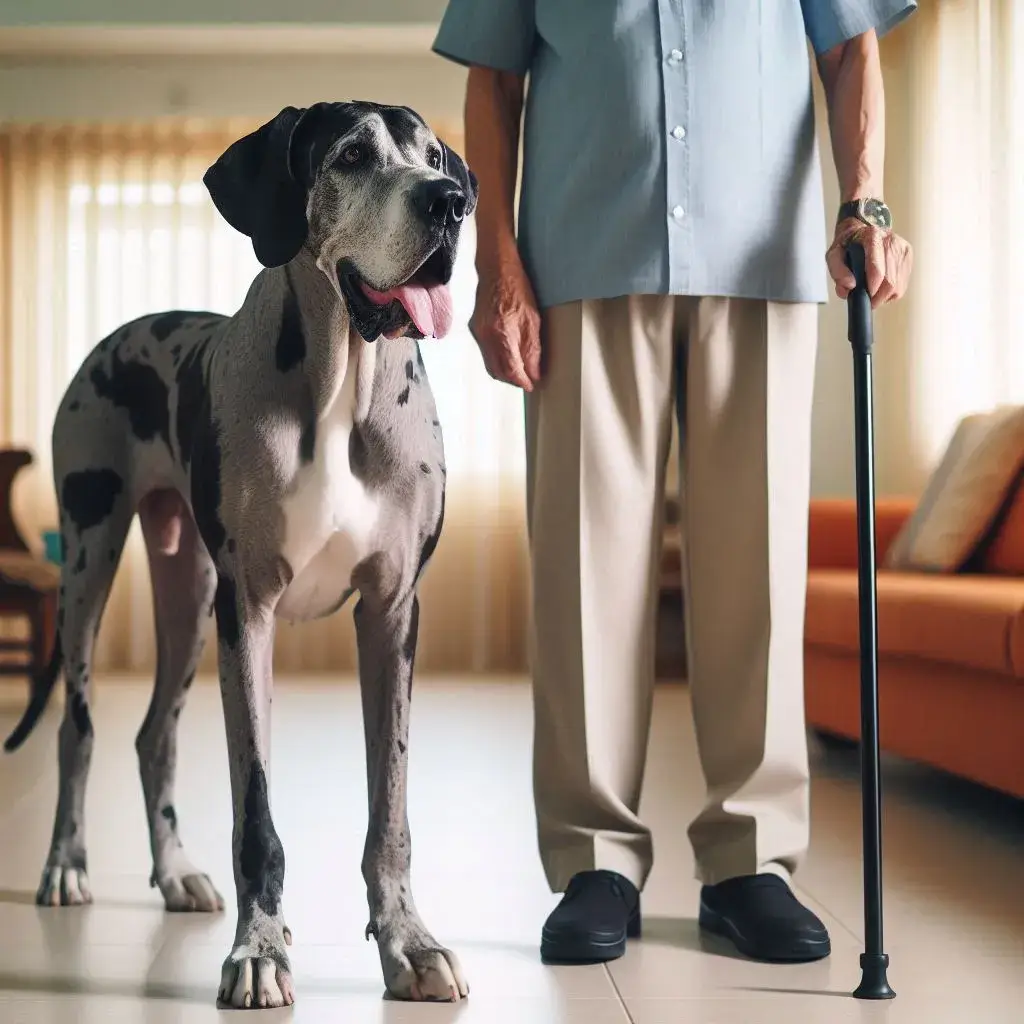
Despite their large size, Great Danes are gentle giants that excel in service work, particularly in mobility assistance. Their calm demeanor and strength make them ideal for providing stability and support to individuals with physical disabilities.
Great Danes in Mobility Assistance
Great Danes are often trained to support individuals who have difficulty walking or who need help maintaining balance. Their size and strength allow them to act as a brace for their handlers, helping them navigate their environment safely.
Bernese Mountain Dog
Bernese Mountain Dogs are known for their strength and calm temperament. These qualities make them ideal for service roles requiring physical assistance and a steady, reliable demeanor.
Bernese Mountain Dogs as Mobility and Therapy Dogs
Bernese Mountain Dogs are frequently used in roles that require both emotional support and physical assistance. Their large size allows them to help with mobility, while their gentle nature makes them excellent therapy dogs.
American Staffordshire Terrier
Often referred to as “Amstaffs,” these dogs are strong, loyal, and highly trainable. Despite their sometimes misunderstood reputation, they make excellent service dogs, particularly in roles that require strength and resilience.
Amstaffs in Emotional and Physical Support Roles
American Staffordshire Terriers are often trained to provide both emotional and physical support. Their strong bond with their handlers makes them reliable companions, and their strength allows them to assist with tasks like pulling wheelchairs or opening heavy doors.
Collie
Collies are intelligent, loyal, and gentle, making them great candidates for service work. Their keen sense of awareness and ability to learn quickly make them particularly well-suited for tasks that require vigilance and responsiveness.
Collies as Medical Alert Dogs
Collies are often used as medical alert dogs, especially for individuals with conditions like diabetes or epilepsy. Their sharp instincts allow them to detect changes in their handler’s condition and alert them to potential medical emergencies.
Training and Certification for Service Dogs
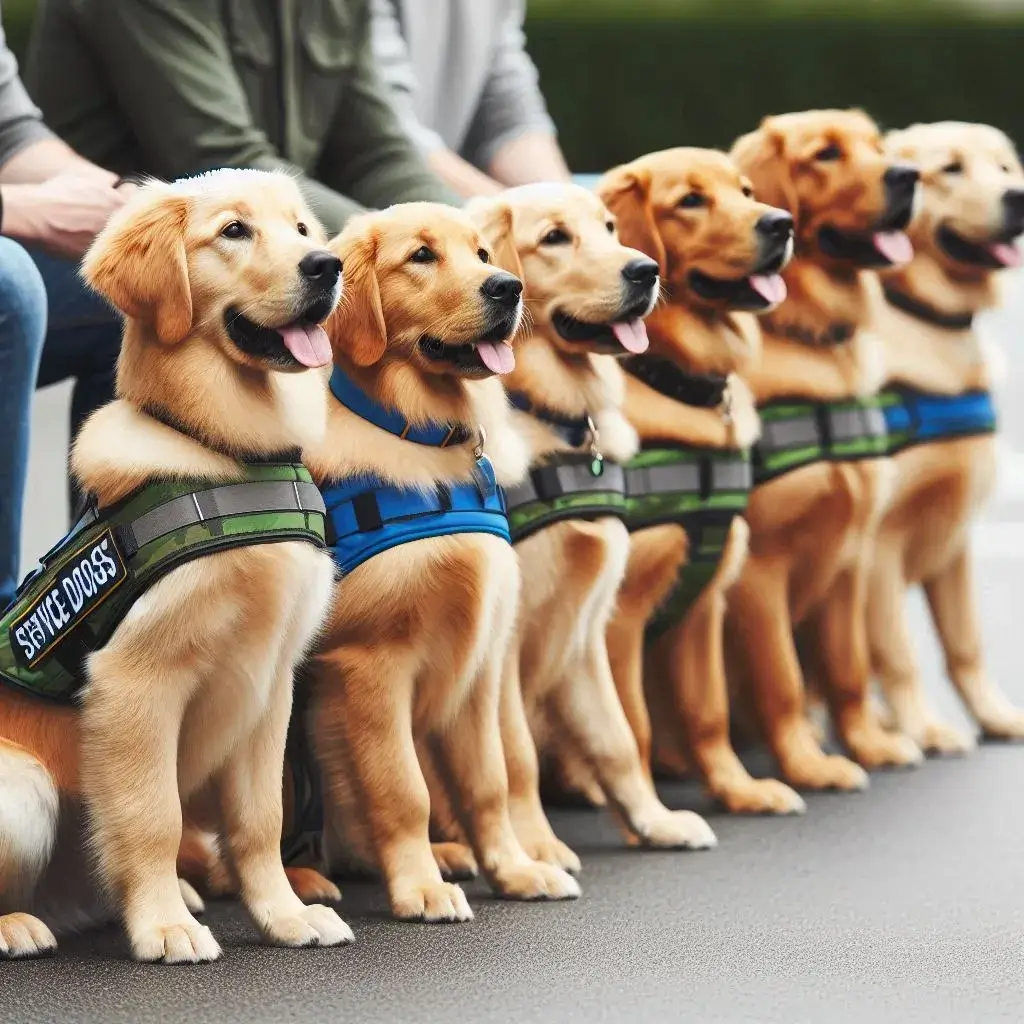
The Importance of Proper Training
Proper training is essential for any dog to perform effectively as a service animal. Training typically begins when the dog is a puppy and can last up to two years. The process involves teaching the dog to perform specific tasks related to the handler’s disability and ensuring the dog can remain focused and calm in various environments.
Basic Obedience Training
Basic obedience is the foundation of any service dog’s training. This includes commands like sit, stay, come, and heel, which are essential for maintaining control and ensuring the dog behaves appropriately in public settings.
Task-Specific Training
Once basic obedience is mastered, dogs undergo task-specific training. This training is tailored to the individual needs of the handler and can include tasks such as retrieving items, providing stability, alerting to medical conditions, or interrupting harmful behaviors.
Examples of Task-Specific Training
- Guide Work: Leading visually impaired individuals safely through various environments.
- Medical Alerts: Detecting and alerting to changes in blood sugar levels or impending seizures.
- Mobility Assistance: Providing balance support or helping with walking.
Certification and Legal Considerations
While there is no official certification required for service dogs under U.S. law, many organizations offer certification programs to ensure the dog meets high standards of training and behavior. Handlers need to understand the legal rights and responsibilities that come with having a service dog.
Understanding Public Access Rights
Under the ADA, service dogs are allowed in any public place where their handler is permitted. This includes restaurants, stores, hospitals, and public transportation. Handlers should be aware of their rights and be prepared to advocate for their service dog if necessary.
The Role of Service Dog Organizations
Service dog organizations play a crucial role in training and matching dogs with individuals in need. These organizations often provide support throughout the dog’s life, ensuring both the dog and the handler have the resources they need to succeed.
Choosing a Reputable Organization
When selecting a service dog organization, it’s important to choose one with a good reputation for thorough training and ongoing support. Look for organizations that have experience with the specific type of service dog you need and that offer transparency about their training methods.
Matching the Right Dog to the Right Handler
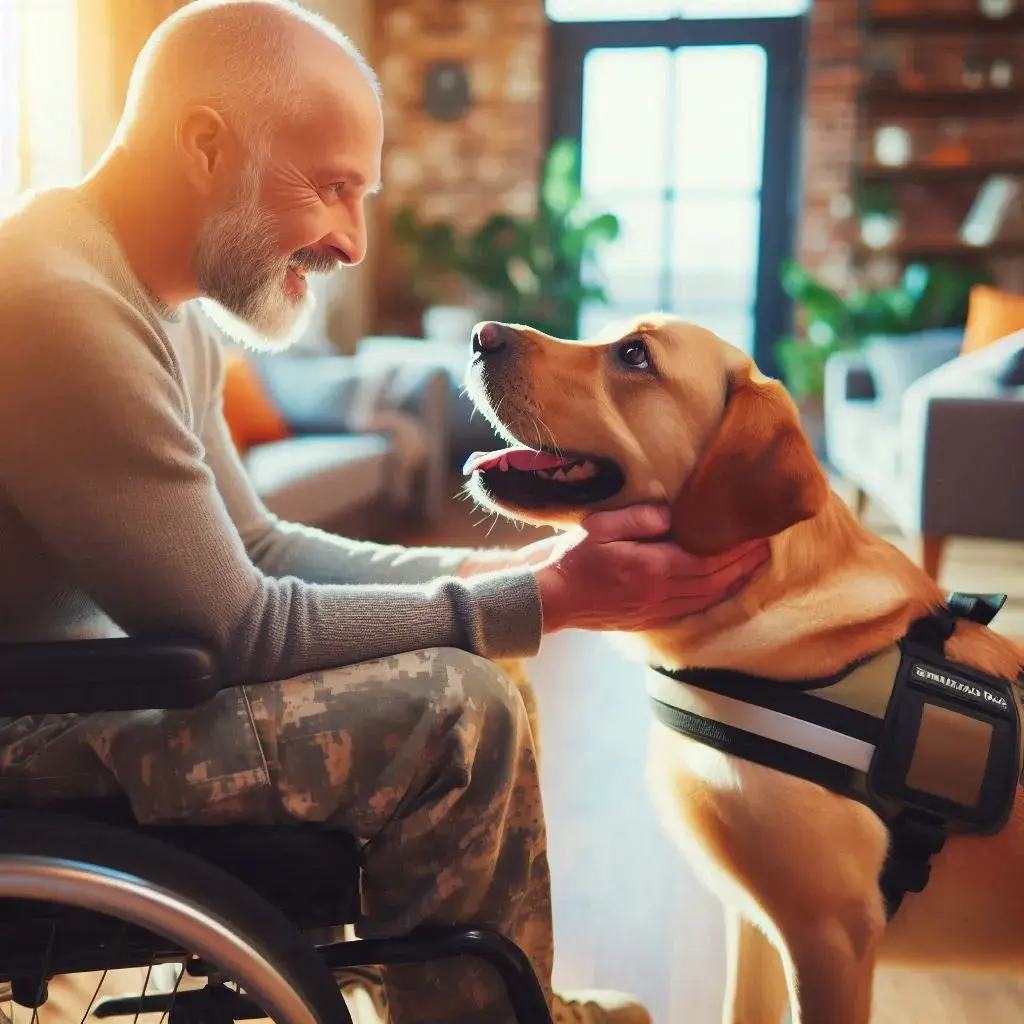
Assessing the Handler’s Needs
The first step in matching a service dog to a handler is assessing the handler’s specific needs. This includes considering the type of disability, the environment in which the dog will work, and the handler’s lifestyle.
Individualized Matching Process
Each handler’s needs are unique, so the matching process is highly individualized. The service dog must be able to perform the necessary tasks and also fit well with the handler’s personality and living situation.
The Importance of Temperament Matching
A successful service dog-handler relationship depends on a good temperament match. The dog’s personality should complement the handler’s needs, whether they require a calm, patient dog for emotional support or a more active dog for physical tasks.
Temperament Testing in Service Dogs
Before being placed with a handler, service dogs undergo extensive temperament testing. This ensures that they can remain calm under pressure, focus on their tasks in various environments, and form a strong bond with their handler.
Ongoing Support and Training
Even after placement, ongoing training and support are crucial for maintaining a successful service dog partnership. Regular follow-up sessions can address any issues that arise and help reinforce the dog’s training.
Continuing Education for Service Dogs
Service dogs benefit from continuing education throughout their lives. This can include refresher courses on their specific tasks, as well as new training to adapt to any changes in the handler’s needs or environment.
FAQs About Service Dog Breeds
1. What makes a good service dog?
A good service dog is calm, intelligent, and highly trainable. They must be able to perform specific tasks consistently and remain focused even in distracting environments.
2. Can any dog be a service dog?
Not all dogs are suited for service work. Breeds that are naturally intelligent, trainable, and have a calm temperament are more likely to succeed as service dogs.
3. What is the difference between a service dog and an emotional support animal?
A service dog is trained to perform specific tasks to assist a person with a disability, while an emotional support animal provides comfort but is not trained for specific tasks. Service dogs have legal rights to access public places, while emotional support animals do not.
4. How long does it take to train a service dog?
Training a service dog can take up to two years, starting with basic obedience and progressing to task-specific training tailored to the handler’s needs.
5. What breeds are best for mobility assistance?
Breeds like Great Danes, Labrador Retrievers, and Bernese Mountain Dogs are well-suited for mobility assistance due to their strength, size, and temperament.
6. Can service dogs be trained to assist with multiple disabilities?
Yes, service dogs can be trained to assist with multiple disabilities. For example, a dog can be trained to provide mobility assistance while also alerting to medical conditions such as seizures or low blood sugar.
Choosing the right dog breed for service work is a critical decision that can greatly impact the quality of life for individuals with disabilities. By understanding the unique qualities of different breeds and the specific needs of the handler, you can find the perfect service dog to provide both practical assistance and companionship.
